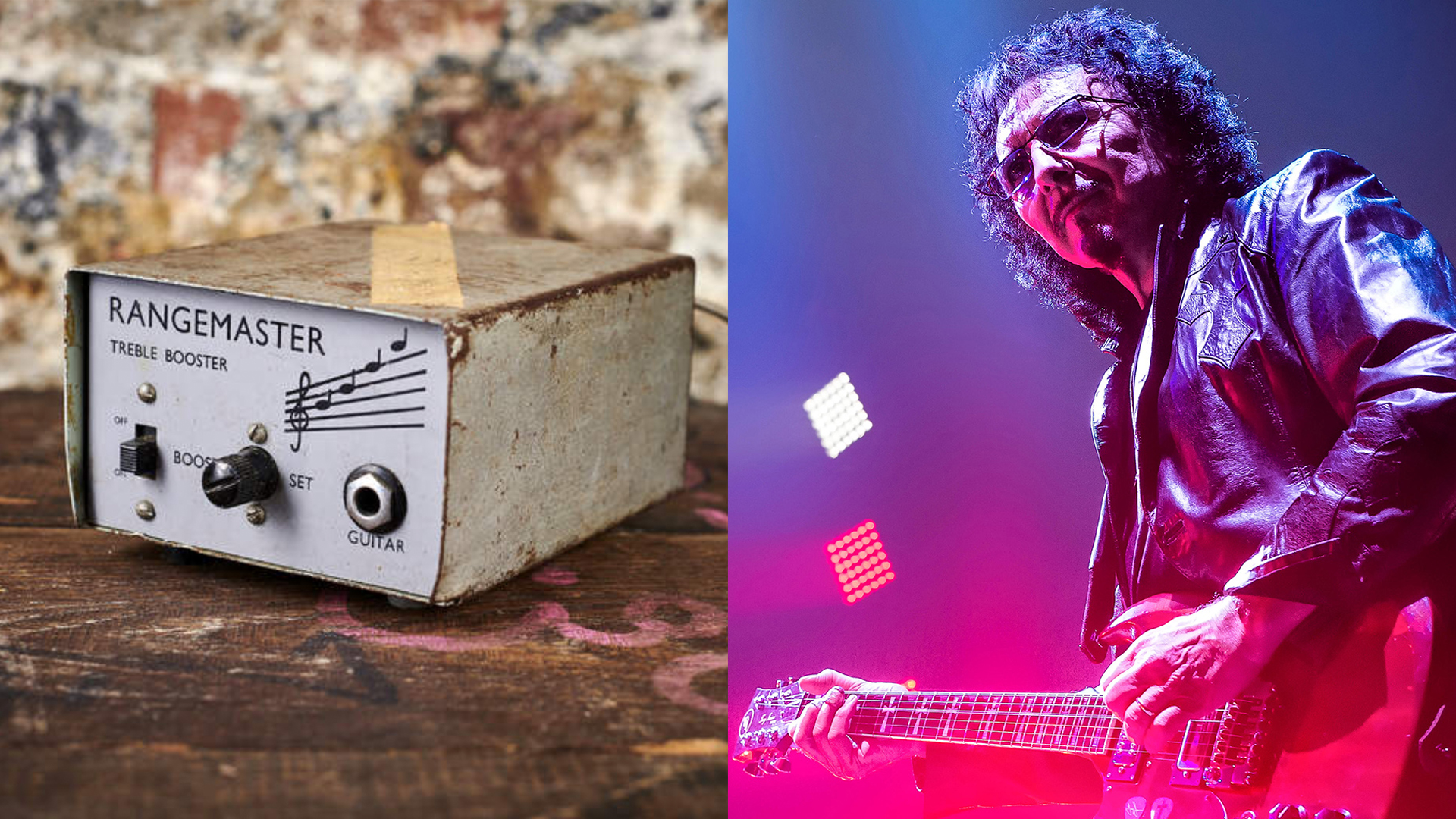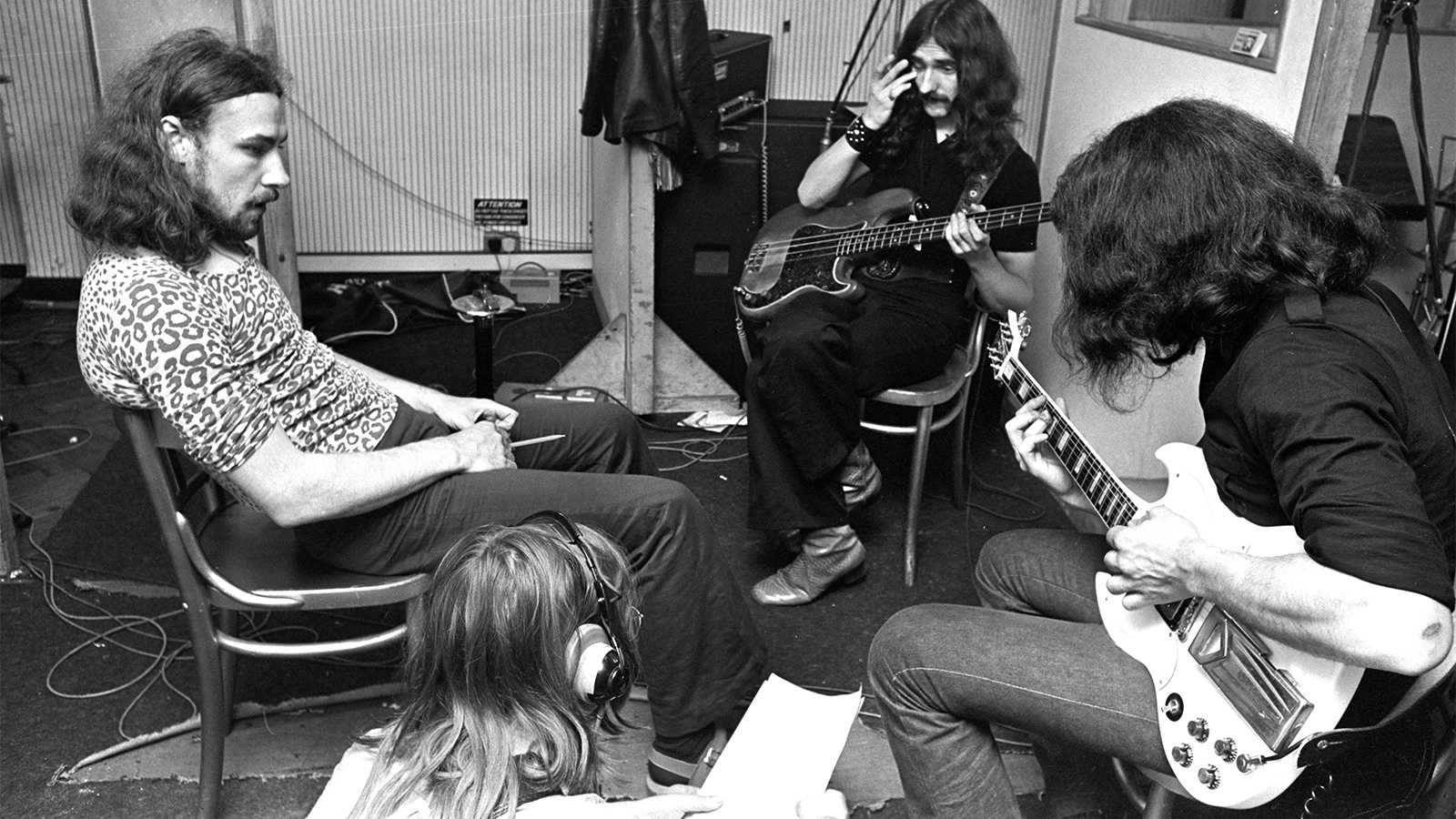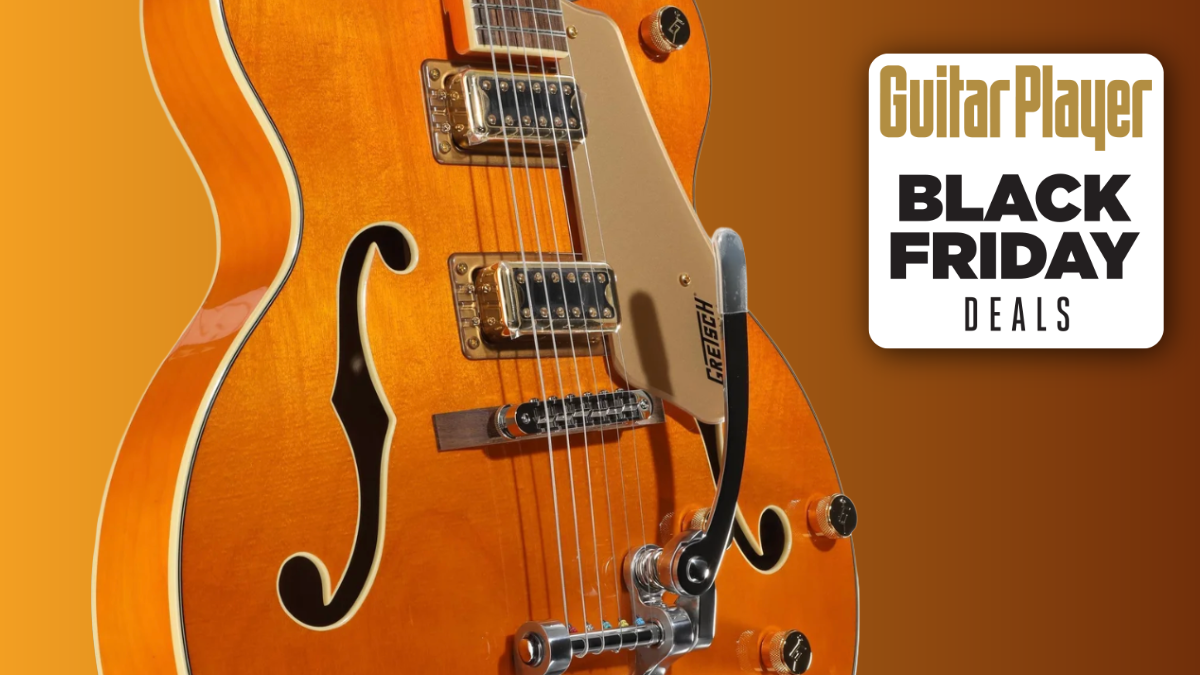“He found it in my gear trunk and threw it away! I couldn’t believe it.” Tony Iommi’s tech threw out the one-of-a-kind treble booster behind Black Sabbath’s classic guitar tone
An essential element of his guitar tone, the pedal disappeared in 1979 during a refresh of his rig

When the original Black Sabbath reunite to perform their final live gig on July 5 in Birmingham, England, a lot of guitar history will be onstage with them. As the band’s founding guitarist, Tony Iommi forged the sound of heavy metal more than 50 years ago, setting in motion an entire genre full of downtuned doomy riffs.
But creating that signature sound was a process of trial and error that began when the left-handed guitarist lost the tips of his fretting hand’s middle and ring fingers in a factory accident. Inspired by Django Reinhardt, who continued playing after losing his ring and little finger in a fire, Iommi soldiered on, making prosthetic fingertips from a plastic bottle of Fairy dish detergent, then gluing leather onto the plastic to help it grab the strings.
The tips have to be re-created on a regular basis. And as he told Guitar Player in his cover feature for our January 2010 issue, not just any leather will do.
“The leather I use is from a jacket I bought in Toronto 35 years ago, which was old when I got it,” he explained. “I’ve been cutting little pieces from it all these years because it is just the right type of leather for the thimbles. I’ve tried newer leather and it doesn’t work because it grips the strings too much.
“I put little pieces on the tips of the thimbles, and then rub the surfaces down on a mirror or something so that the leather bonds in, and I also rub the edges down so that they don’t catch on my other fingers.
“It would probably be a classic now if I hadn’t cut it up,” he said with a laugh.
“But yeah, it’s been a useful jacket, and I’m going to have to find another one at some point.”
All the latest guitar news, interviews, lessons, reviews, deals and more, direct to your inbox!

While the leather-covered thimbles were themselves instrumental to Iommi’s sound, he initially made a number of mods to his Fender Stratocaster to simplify playing, then carried them over to his Gibson SG when he switched electric guitar models.
“I began experimenting while I was still playing my Strat. I used to have it in bits constantly, with the neck off, and was always doing something to it. It was all a matter of trial and error to find ways to make it more comfortable for me to play given my limitations,” he said.
“I had the frets taken down, I had polyurethane put on the fretboard so that the thimbles wouldn’t catch on the frets and rip the leather, and I used really light-gauge strings. I even put scalloped fretboards on a few guitars, but I wound up changing them back because I couldn’t keep the guitars in tune.”
I’m pretty basic in that way—I don’t use a lot of gadgetry and whatnot. Some people put a million pedals out there, but I like to create it from the guitar tone.”
— Tony Iommi
He also bypassed the bridge pickup’s tone control. “I had it wired straight through from just the volume control. The tone control on the neck pickup was still connected. The reason I bypassed the other tone control was that I used to keep knocking the thing off with my hand, so I just had it wired on and said, ‘That’s my sound and that’s it.’
“I’m pretty basic in that way — I don’t use a lot of gadgetry and whatnot. Some people put a million pedals out there and create the sound like that, but I like to create it from the guitar tone.”

But there is one pedal that was a key ingredient of that early Sabbath sound: a modified Dallas Rangemaster Treble Booster. The pedal is the same one preferred by Rory Gallagher, who in turn inspired Brian May to make it part of his signature sound.
Iommi added the pedal to his rig in the late 1960s while performing with Sabbath drummer Bill Ward in the band Rare Breed.
“I had one in the late ’60s, and while I was playing in a band with Bill Ward this guy who played in another band with Bill said to me, ‘I can make that sound better for you,’ so I let him take it and when he brought it back it had a lot more sustain. I used it on all the early Sabbath stuff, right up until Heaven and Hell.”
As Iommi explained to Guitar World’s former editor-in-chief Brad Tolinski in 2017, the modifications gave the pedal more gain, allowing Iommi to push his Laney amp into overdrive.
“Other guitarists would say, ‘You can’t put that in front of the amplifier, you’re gonna overload it.’ And I would say, ‘I know — that’s what I want it to do!’ And that’s the sound you hear on the early Sabbath albums that everyone loves.”
In addition, Iommi told Guitar Player, “I ran the modified Treble Booster into the bass input of my Laney amp and it created my sound. Without it, the early Laneys were underpowered.”
We played at an ice hockey rink, and all the machines that kept the ice frozen affected the Treble Booster so I got this horrendous buzzing sound.”
— Tony Iommi
But all that extra gain could be difficult to control.
“The Treble Booster was noisy, though, and caused a lot of problems, particularly in the early days when we were touring in the U.S.,” Iommi explained.
“For example, we played at an ice hockey rink in Philadelphia called the Spectrum, and all the machines that kept the ice frozen affected the Treble Booster so I got this horrendous buzzing sound. We did actually cancel some gigs because of the noise, because I couldn’t get my sound without using the Rangemaster.”
But in 1979, Iommi’s Rangemaster — the key to his tone on classic cuts like “Iron Man” and “Paranoid” — suddenly disappeared.
“I hired a guy to rebuild all my amps and believe it or not he found it in my trunk and threw it away! I couldn’t believe it,” Iommi said.
Unfortunately, no one had ever bothered to see what modifications had been made to the pedal.
“And since I didn’t know which components had been changed, I’ve never been able to reproduce it.”

If there’s one other pedal that was essential to the early Sabbath sound, it’s the Tycobrahe Parapedal wah.
“We used to use Tycobrahe sound gear and at one point they made a small number of these pedals and gave me a few of them,” Iommi explained. “Hendrix or somebody like that had one, so I tried one and liked it.
“In those days it was hard to get a pedal that could take a lot of power and not be too noisy, and that one worked well, so I just stuck with it. Soon they went out of production and now they are hard to find, so although I’ve still got the old ones, now I use the Chicago Iron Parachute Wah, which is an exact copy.
“Why do I like them? I just like the character of them I suppose. But I still like to try different stuff.”
As Black Sabbath prepare to take the stage one last time, Iommi has admitted this final act in the group’s history is giving him a mix of feelings.
They made a small number of these pedals and gave me a few of them. Hendrix or somebody like that had one, so I tried one and liked it.”
— Tony Iommi
“Excitement mixed with fear” is how he describes it. While the event — dubbed Back to the Beginning — is expected to be a massive celebration of Sabbath’s legacy, Iommi says the unpredictability makes him nervous.
Unlike the band’s typical tours, which involved extensive rehearsals and a tightly controlled environment, this one-off event is full of moving parts, from a star-studded lineup to technical demands and the uncertain physical condition of frontman Ozzy Osbourne, who was diagnosed with Parkinson's disease in 2020.
“The worrying thing for me is the unknown,” he tells Music Week. “We don't know what's going to happen.
“You're used to Ozzy running around, but he certainly won't be doing that for this show,” Iommi says. “I don't know if he's going to be standing or sitting on a throne or what.”
Back to the Beginning will be available as a global livestream.
Elizabeth Swann is a devoted follower of prog-folk and has reported on the scene from far-flung places around the globe for Prog, Wired and Popular Mechanics She treasures her collection of rare live Bert Jansch and John Renbourn reel-to-reel recordings and souvenir teaspoons collected from her travels through the Appalachians. When she’s not leaning over her Stella 12-string acoustic, she’s probably bent over her workbench with a soldering iron, modding gear.
